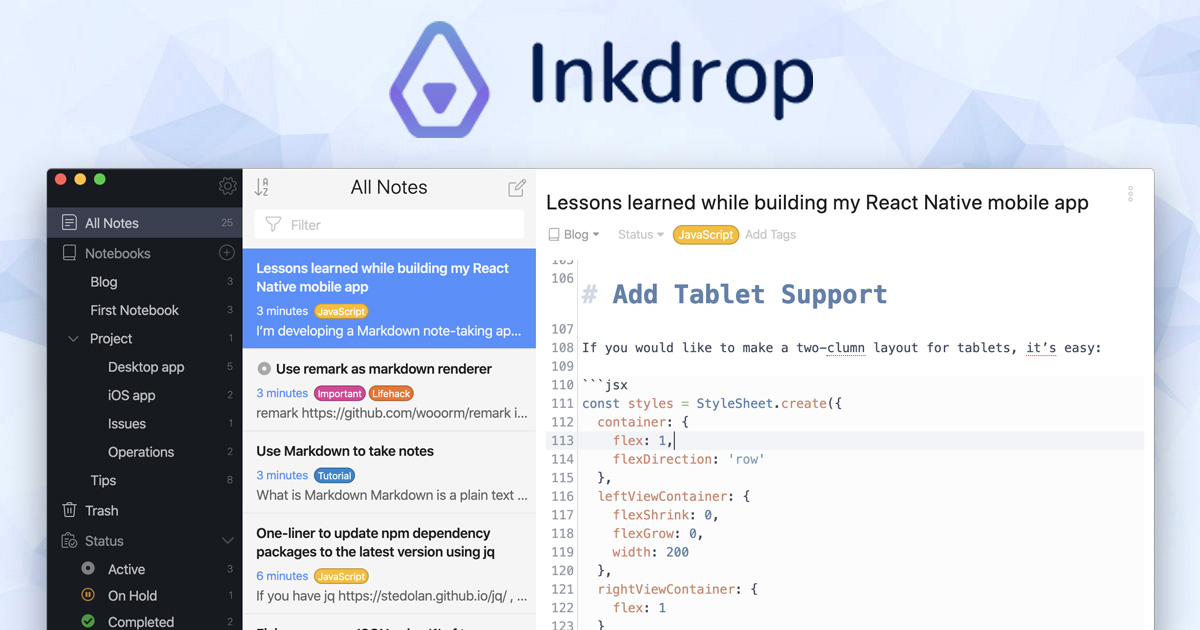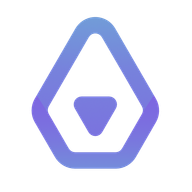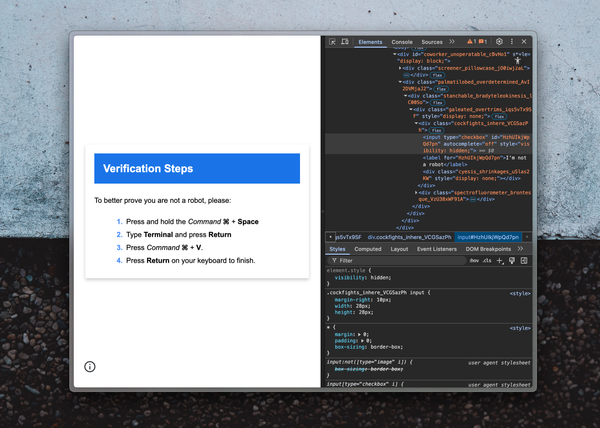How to build a live email editor using MJML, Pug, and Gulp

Hi, it's Takuya. I've been preparing onboarding newsletters for my app, Inkdrop. In order to achieve a nice-looking email design, I researched several email templates and ended up creating my own. Here is the result:

Designing emails is hard because there are so many limitations that browsers don't have despite using HTML. For example, you can't still use Flexbox. So, you have to use traditional hacks, such as using tables for layouts.
Then, I came across MJML (Mailjet Markup Language), which is an alternative markup language for writing responsive HTML emails:

For example, here is an email template with three columns in MJML format:
<mjml>
<mj-body>
<mj-section>
<mj-column>
<mj-text align="left"> Some text for your preheader </mj-text>
</mj-column>
<mj-column>
<mj-text align="center"><a href="email-permalink">Read in the browser</a></mj-text>
</mj-column>
<mj-column>
<mj-text align="right"> Lorem ipsum </mj-text>
</mj-column>
</mj-section>
</mj-body>
</mjml>It renders like so:

You can check how it looks on their live editor here:
There are several templates available on their website, so you can quickly get started:

Write MJML in Pug
I am too lazy to write HTML closing tags, so I wanted to try writing MJML in another template engine like Pug. This makes the process simpler and easier to edit. For example, the above MJML example can be written in Pug as follows:
mjml
mj-body
mj-section
mj-column
mj-text(align='left') Some text for your preheader
mj-column
mj-text(align='center')
a(href='email-permalink') Read in the browser
mj-column
mj-text(align='right') Lorem ipsum
Now, I feel like making a live editor that lets you write HTML emails quickly using MJML and Pug.
Build a simple live editor
First, you need to install a task runner. This time, I'm gonna use gulp.
mkdir email-builder
cd email-builder
npm init -y
npm i gulp gulp-pug gulp-renameLet's create gulpfile.js in your root project folder:
const gulp = require("gulp");
const rename = require("gulp-rename");
const pug = require("gulp-pug");
gulp.task("pug", function () {
return gulp
.src(["pug/**/*.pug", "!pug/**/_*.pug"])
.pipe(
pug({
pretty: true,
}),
)
.pipe(
rename(function (path) {
path.extname = ".mjml";
}),
)
.pipe(gulp.dest("./mjml"));
});
Now you can convert mjml files into pug. Create two folders to save them:
mkdir pug mjmlCreate a file in pug/example.pug and paste the above example, then run gulp pug. It will generate a file in mjml/example.mjml.
The next step is to convert MJML files into HTML. Install additional packages:
npm i mjml through2And add another gulp task like so:
const through = require("through2");
const mjml = require("mjml");
gulp.task("mjml", function () {
return gulp
.src(["mjml/*.mjml"])
.pipe(
through.obj(function (file, enc, callback) {
const output = file.clone();
const render = mjml(file.contents.toString(), {});
output.contents = Buffer.from(render.html);
this.push(output);
return callback();
}),
)
.pipe(
rename(function (path) {
path.extname = ".html";
}),
)
.pipe(gulp.dest("./html"));
});
Let's run gulp mjml, then, example.html should be generated in the html/ folder. Cool!
Next, let's make it watch file changes and automatically re-generate.
gulp.task("watch", function () {
gulp.watch("pug/**/*.pug", gulp.task("pug"));
gulp.watch("mjml/**/*.mjml", gulp.task("mjml"));
});
Preview emails with live reload
Now, you can open the output HTML files on a browser but it'd be better to have them reload automatically when editing, just like the MJML live editor. It can be easily accomplished by using live-server. Install it:
npm i live-serverThen, add another gulp task for live server:
const liveServer = require("live-server");
gulp.task("live-server", function (done) {
var params = {
port: 8080,
host: "127.0.0.1",
root: "./html", // Set this to your HTML output directory
open: true,
file: "index.html",
wait: 400,
mount: [["/components", "./node_modules"]],
logLevel: 2,
};
liveServer.start(params);
done();
});
gulp.task("default", gulp.parallel("watch", "live-server"));
Okay, now you can just run gulp to watch files and launch live-server! Here is the result:
Built a live email editor using Pug, MJML, and Gulp! It live-reloads as you edit the template files and converts Pug→MJML→HTML✨ I'll share how to accomplish it later. pic.twitter.com/EV0djop7sk
— Takuya 🐾 devaslife (@inkdrop_app) January 18, 2024
Looks nice 😎
Gulpfile
To sum up the snippets, the gulpfile.js looks as follows:
const gulp = require("gulp");
const rename = require("gulp-rename");
const pug = require("gulp-pug");
const through = require("through2");
const mjml = require("mjml");
const liveServer = require("live-server");
gulp.task("live-server", function (done) {
var params = {
port: 8080,
host: "127.0.0.1",
root: "./html", // Set this to your HTML output directory
open: true,
file: "index.html",
wait: 400,
mount: [["/components", "./node_modules"]],
logLevel: 2,
};
liveServer.start(params);
done();
});
gulp.task("pug", function () {
return gulp
.src(["pug/**/*.pug", "!pug/**/_*.pug"])
.pipe(
pug({
pretty: true,
}),
)
.pipe(
rename(function (path) {
path.extname = ".mjml";
}),
)
.pipe(gulp.dest("./mjml"));
});
gulp.task("mjml", function () {
return gulp
.src(["mjml/emails/*.mjml", "!mjml/**/_*.mjml"])
.pipe(
through.obj(function (file, enc, callback) {
const output = file.clone();
const render = mjml(file.contents.toString(), {});
output.contents = Buffer.from(render.html);
this.push(output);
return callback();
}),
)
.pipe(
rename(function (path) {
path.extname = ".html";
}),
)
.pipe(gulp.dest("./html"));
});
gulp.task("watch", function () {
gulp.watch("pug/**/*.pug", gulp.task("pug"));
gulp.watch("mjml/**/*.mjml", gulp.task("mjml"));
});
gulp.task("default", gulp.parallel("watch", "live-server"));
gulp.task("build", gulp.series("pug", "mjml"));
Hope it helps!
Check out my app called Inkdrop - A tech note-taking app for software developers:






